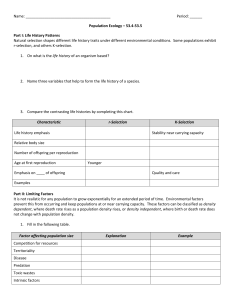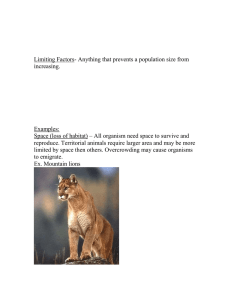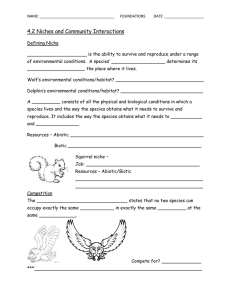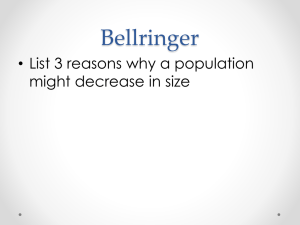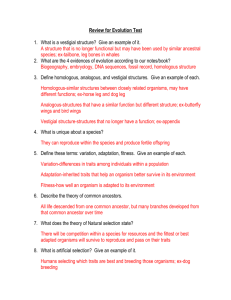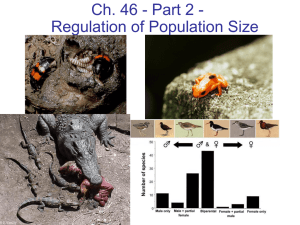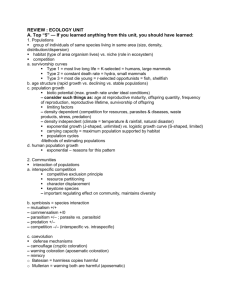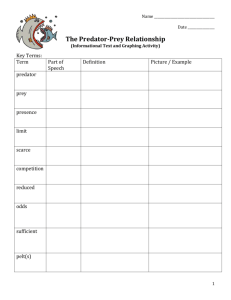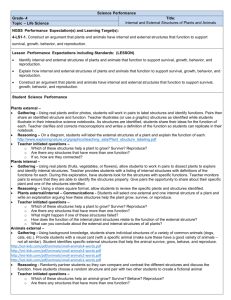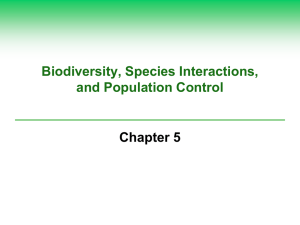Population Change Factors: Growth Strategies & Regulation
advertisement
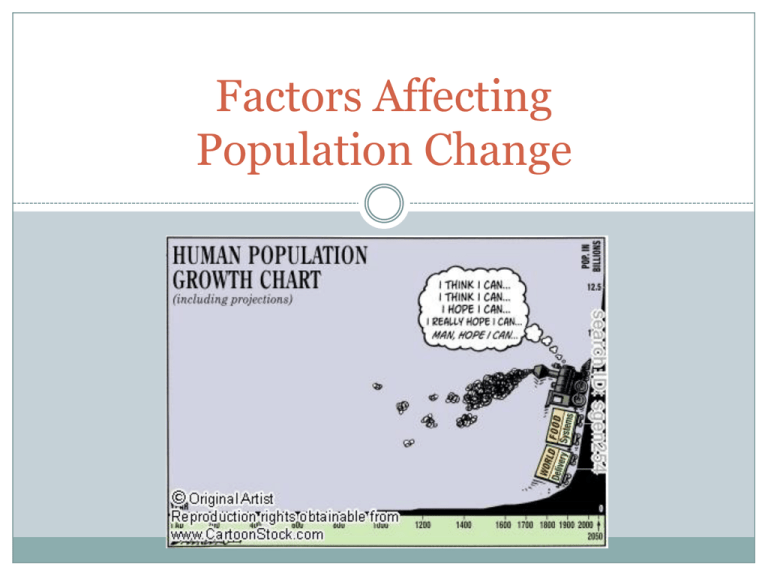
Factors Affecting Population Change Exponential Vs. Logistic Growth Two Strategies for Growth 1. “r-strategists”: Spawners! Characterized by exponential growth, which results in temporarily large populations, followed by sudden crashes in population size. Ex. Insects, bacteria, some plants live in unpredictable and rapidly changing environments Reproduce quickly when conditions are favorable External Fertilization Many offspring: small, mature rapidly, no parental care Two Strategies for Growth 2. “K-strategists”: Brooders! Characterized by a high degree of specialization. Ex. Trees, whales, tigers, etc. Live in stable and predictable environments Can compete effectively Reproduce late in life Internal Fertilization Few offspring: large, mature slowly, often much parental care Density Dependent Factors Factors that influence population regulation, having greater impact as population density increases or decreases Struggle for survival includes factors like competition, predation, disease, and other biological effects Density Dependent Factors Intraspecific Competition – Ecological interaction where individuals of the same species/population compete for resources in their habitat. Density Dependent Factors Predation - Consumption of prey by carnivores -Regulation can occur due to preferred species of prey Density Dependent Factors Disease – Pathogens able to pass from host to host in overcrowded populations with greater ease Density Dependent Factors Allee effect – Occurs when population cannot survive or fails to reproduce enough to offset mortality once the population density is too low; such populations usually do not survive. Eg. The extinct passenger pigeon. Density Dependent Factors Minimum viable population size – Smallest number of individual needed for a population to continue for a given period of time Small population size can result in inbreeding and loss of genetic variation Density Independent Factors Factors influencing population regulation regardless of population density Human intervention – Pesticides…Climate change Environment - reproductive success based on temperatures, natural disasters etc Limiting Factors Any essential resource that is in short supply or unavailable. These factors determine how much the individual or population can reproduce. Eg. light, space, water, nutrients Think-Pair-Share Classify each of these as either density-dependent or densityindependent. Share with a classmate – do you agree or diagree? Why? [I][C] A drought decreases the water level of a lake, thus decreasing its carrying capacity. Lynx prey on snowshoe hares. An increase in the snowshoe hare population caused an increase in the lynx population. Due to the introduction of a new species of fish, a lake becomes crowded and some species do not survive. Increased water temperature causes many aquatic organisms to die. Why might the birth and death rates of a white-tailed deer population in the Carolinian forest of southern Ontario be a density-dependent factor?
